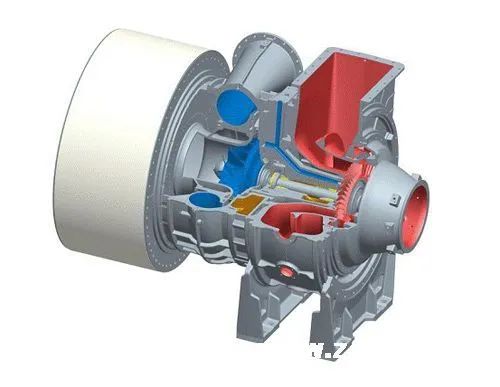The strong fluctuation of the air flow in the compressor system of the supercharger causes the strong vibration of the compressor and makes a rough wheezing sound, which is called the surge phenomenon of the supercharger.
This phenomenon will cause the vibration of the supercharger shaft and the mechanical jolt of the entire supercharger, which is extremely harmful to the safe operation of the supercharger. There are many reasons for the surge of the supercharger, which are summarized as follows:
1. The air flow channel is blocked.
The air flow channel of the compressor is from the inlet filter screen → compressor → air cooler → scavenging air box → cylinder inlet → exhaust port (valve) → exhaust pipe → exhaust gas turbine → chimney.
Dirty blockage in any part of the system will reduce the flow rate and increase the back pressure.
Among them, the parts that are easy to get dirty are the inlet filter screen, compressor blade diffuser and impeller, air cooler, cylinder intake and exhaust ports, turbine nozzle ring and impeller, which should be cleaned to eliminate dirty clogging.
2. The components of the host itself are faulty, resulting in poor matching of the supercharger.
A large amount of air leaks from the piston ring, and the exhaust valve is not closed tightly, which causes the speed of the supercharger to increase, the displacement of the supercharger to increase, the main engine cannot be used up, and the back pressure increases to generate surge. Maintenance should be strengthened, and the thermal clearance of the exhaust valve should be adjusted correctly.
3. The diesel engine is equipped with multiple pulse superchargers, and the speed of the supercharger decreases when a certain cylinder is extinguished, while the pressure of the scavenging box changes very little, resulting in an increase in the back pressure of the supercharger.
If surge occurs in this case, the cylinder connected to another non-surge supercharger can be stopped to adjust the pressure of the scavenging tank to the back pressure of the supercharger.
Or because the load of each cylinder of the diesel engine is seriously uneven, at this time, the supercharger connected to the cylinder with the smallest load will also have high back pressure and cause surge, then it is necessary to measure the load of each cylinder, and determine the fuel injection amount after confirmation. Properly increase the load of each cylinder as evenly as possible, that is, it can be eliminated.

